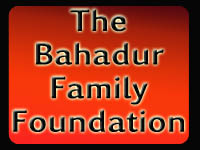|
BOMBAY
In his 1924 novel A Passage To India, E.M. Forster perfectly captures the majesty and mystery of India during the final years of the British Raj. Throughout our recent expansive (but hardly definitive) twelve day expedition across the same subcontinent, we experienced Forster’s aftershocks—exploring with awe and fascination the gulfs in modern India that exist today, not against a backdrop of oppression but of a new, trillion dollar economy.
To Western eyes, India still manifests Forster’s sense of ‘muddlement’—vast seas of congestion sprawling beneath glittery high rises, a benign acceptance of endless labor among India’s landless majority (where three hundred million—the population of the United States—earn less than forty cents a day) while their technological counterparts in medicine and software engineering have begun to dominate the world’s stage, everything unfolding amid a floating consciousness that juggles an innate belief in life’s ultimate impermanence while enjoying their sensory world to the fullest. This is the India we experienced; free of colonial domination, at the helm of its own destiny, a pastiche of colors, smells and faces, crammed with culture and character, an India which in 2008, as in 1924—as in 1924 BC—defies label.
If you want to sound up-to-date, you say Mumbai, but most Indians, including Avinash Rachmale, still say Bombay. Rachmale, President and founder of Detroit-based Lakeshore Engineering, who accompanied us on the first—and certainly the most riveting leg of our India journey—explained the rationale behind the name change this way: “Beginning in 2006, the ruling Congress Party in India pushed through the renaming of Indian cities to their pre-colonial names, but informally, there’s a lot of resistance. Some people think that the cost of changing signs, for example, might be better used for improving urban infrastructure. For me, I grew up saying Bombay, and I still say it”
Whatever you call it, Bombay is a massive experience. Fifteen million strong, it is a swirling explosion of people and purpose, where cattle can be seen nudging Bentleys and round the clock cacophony rises in Bombay’s first language, Hindi, her second, Marthi while sixty thousand black and yellow taxicabs bleat endlessly in her third—horns. (I.T. technospeak runs a pretty close fourth). As the commercial and entertainment center of India, Bombay accounts for 25 per cent of industrial output and seventy per cent of capital transactions as well as being home to ‘Bollywood’, one of the largest film producers in the world.
With Avinash as our tour guide, we viewed Bollywood studios and Victoria Terminus, the gothic train station which has appeared as a set in countless films, Western and Hindi, then wove across town for a multitude of cultural eye-candy moments, including the extensive, twenty-four thousand square foot Crawford Market whose interior fountains were designed by Rudyard Kipling’s father. Most striking, perhaps, is the Gateway of India, located on the waterfront in South Bombay. An eighty-five foot basalt arch. The Gateway of India was built to commemorate the visit of King George V and Queen Mary in December 1911, and is currently undergoing a complete renovation. Like the Statue of Liberty to those arriving in New York, the Gateway is traditionally the first thing visitors arriving by boat would see of the Maharashtran capital.
The Sanskrit saying, ‘Atithi Devo Bhava’, or ‘the guest is truly your god’ has crossed generation and is truly believed by each individual. Nowhere was this maxim more evident than in the home of Dr. Govinath Rachmale, the elder brother of Avinash. We were greeted in the foyer of his Bombay apartment first with the scent of sizzling vegetables, spicy curry, lentils and rice, then with the warming ‘namastey’ of his wife Smita and his youngest daughter Patty. Even in modern Indian culture, women are the backbone of traditional hospitality, which is never ostentatious and always sincere. Again, as exemplified in Forster’s novel, hospitality is not only a beneficial ideal but a priority and even an ultimate dream, as a true host in India finds that giving and receiving become one.
We had spent that day at the Sir J.J. Hospital, witnessing perhaps the most remarkable sight we would encounter in India—open heart surgery performed by Dr. Rachmale. The patient, a twenty-five year old rural man requiring heart valve replacement, was treated without charge by Dr. Rachmale, just one of more than
than thirty thousand in-patient treatments offered gratis at the hospital each year. This revolutionary concept, along with the hospital itself, has existed since the mid-nineteeth century thanks to the efforts of Bombay Governor Sir Robert Grant, who sought to provide assistance to the countless Indians he saw perish for lack of basic medical care, and a subsequent donation by Sir Jamshetjee Jejeebhoy, the First Indian Knight & Baronet. This day, the surgery was a complete success, bringing the roster of heart operations performed by Dr. Rachmale throughout an illustrious career to more than ten thousand.
Despite his inarguable status as hero, repairing the hearts of his countrymen through the generosity of his own, the unassuming Dr. Rachmale (and his equally charming and non-pretentious brother Avinash, whom you have to constantly remind yourself is the founder of a multimillion dollar engineering firm with numerous civic and governmental projects in the works at any given moment) treated the Visionanlist crew with overflowing generosity and warmth. Indian hospitality, we came to understand, is the purest form of respect.
It’s an emotion that we can truly reciprocate, having witnessed closeup the magical, munificent hands of Dr. Rachmale and the kind attentions of Avinash throughout our stay.
|



